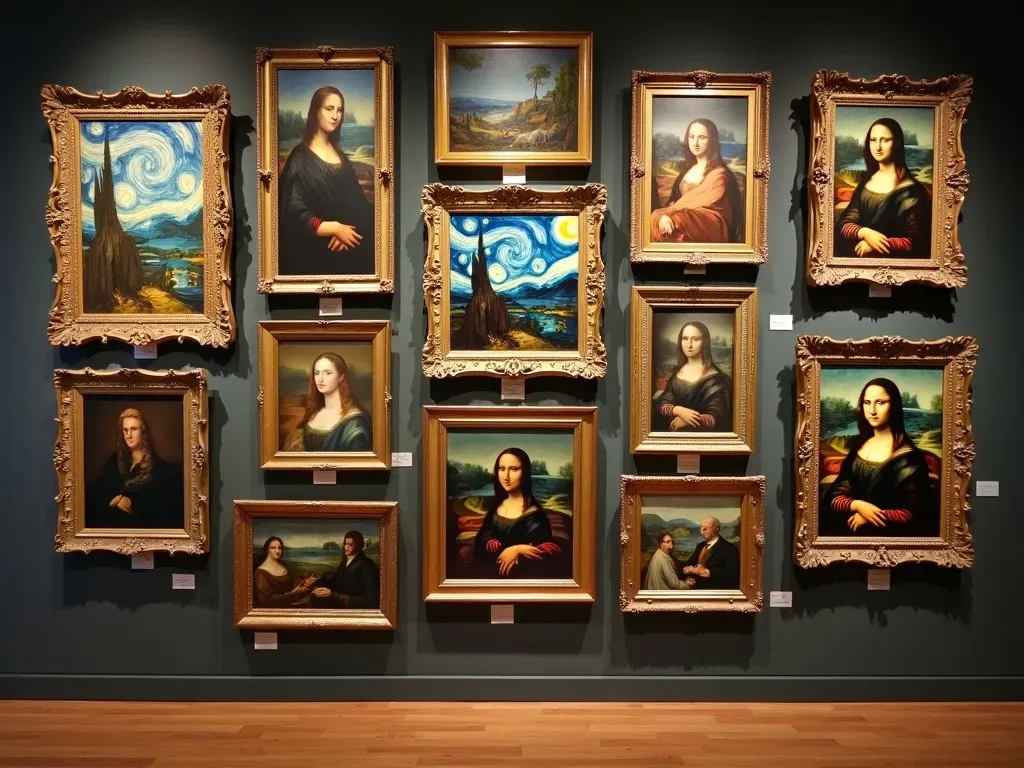Are you searching for stunning pics of paintings and remarkable artwork that captivates the imagination? Look no further! In this article, we delve into the world of art through mesmerizing images of famous paintings, offering a look at some of the greatest works throughout history. From classic masterpieces to modern masterpieces, the following resources and information will guide you to finding the best pictures to paint, and art painting pictures that inspire creativity.
Exploring the Universe of Art Through Pictures
Art comes alive with vibrant colors, intricate details, and historical significance. The beauty of paintings can transform any space and provoke thought and emotion. Here’s a look at some fascinating facts about Famous Paintings that have defined art history.
| Painting Title | Artist | Year | Style |
|---|---|---|---|
| Mona Lisa | Leonardo da Vinci | c. 1503 | Renaissance |
| Starry Night | Vincent van Gogh | 1889 | Post-Impressionism |
| The Persistence of Memory | Salvador Dalí | 1931 | Surrealism |
| The Night Watch | Rembrandt van Rijn | 1642 | Baroque |
| Girl with a Pearl Earring | Johannes Vermeer | c. 1665 | Baroque |
| The Kiss | Gustav Klimt | 1907-1908 | Symbolism |
Notable Characteristics of Famous Paintings
- Color and Technique: Artists employ a variety of Techniques, like glazing and impasto, to create texture and depth.
- Cultural Reflection: Many paintings reflect the times and emotions of their creators, providing insight into historical events.
- Symbolism: Artists often incorporate symbolic elements, allowing viewers to interpret various layers of meaning.
The Resurgence of Digital Access to Art
With the advent of technology, accessing images of famous paintings has never been more convenient. Many institutions offer free resources for art lovers and creators alike. For starters, the National Gallery of Art provides an open access policy for images of artwork in its collection. Visitors can download high-quality images free of charge for various uses—be it educational projects or personal enjoyment. For more information, visit National Gallery of Art’s Open Access.
Free Stock Photo Websites for Art Enthusiasts
Here’s a list of fantastic resources where you can find pics of paintings and various art images:
| Website | Description | URL |
|---|---|---|
| Pixabay | Over 49,000 free painting images available. | Visit Pixabay |
| Pexels | 20,000+ high-quality painting stock photos. | Visit Pexels |
| Unsplash | Gorgeous painting images, royalty-free. | Visit Unsplash |
| Open Culture | High-resolution gigapixel images of classic paintings. | Visit Open Culture |
| Getty Images | Extensive collection of fine art painting stock photos. | Visit Getty |
Techniques to Replicate Famous Paintings
For art enthusiasts who wish to create their own pictures of paintings, understanding certain techniques can make the process more fulfilling:
Famous Techniques Used in Paintings
- Chiaroscuro: Dramatic contrasts between light and shadow.
- Sfumato: A technique used to create a soft transition between colors.
- Impasto: Thick applications of paint for texture.
Best Pictures to Paint for Beginners
- Simple Still Life: Objects such as fruits or flowers can be a great starting point.
- Landscapes: Nature scenes enable exploration of color blending and perspective.
- Abstract Art: Creativity thrives in freedom; abstract compositions allow personal expression.
Recommended Resources for Practice
- Art Instruction Websites: Websites like the Virtual Instructor offer tutorials on various painting techniques.
- YouTube Channels: Channels dedicated to art education often have step-by-step instructions on how to replicate famous pieces.
The Influence of Social Media on Art Sharing
Platforms like Instagram and Pinterest have become instrumental for artists and art lovers to share and discover pics of paintings. These sites allow users to:
- Swap ideas and techniques through visuals.
- Promote their artwork to a broader audience.
- Find Inspiration from other creators.
In fact, art-related hashtags such as #ArtOfTheDay, #PaintingProcess, and #ContemporaryArt have gained substantial traction, leading to a thriving community focused on visual expression.
Art Community and Networking
Connecting with fellow art lovers can enhance your appreciation and understanding of paintings. Join online forums and communities focused on art for insightful discussions. Some popular platforms include:
- DeviantArt: A community for artists and art enthusiasts to share and critique artwork.
- ArtStation: A hub for showcasing portfolios of digital and traditional artists.
FAQs About Pics of Paintings
Q1: Where can I find high-resolution images of famous paintings for my project?
A1: Websites such as the National Gallery of Art and Pixabay provide high-quality images for various uses.
Q2: Are there copyright restrictions when using pics of paintings?
A2: Free stock photo websites like Pixabay and Pexels offer images that are royalty-free. However, it’s always best to check each image’s licensing.
Q3: What are some recommended techniques for beginners to replicate paintings?
A3: Beginners can explore techniques such as chiaroscuro, sfumato, and simple color blocking to start their journey in painting.
Q4: How can I engage with other artists online?
A4: Join platforms like DeviantArt or ArtStation to connect with other artists and exchange ideas and feedback.
Q5: What is the benefit of practicing famous painting techniques?
A5: Practicing well-established techniques enhances your skills, helps you understand art history, and fosters personal creativity.
Whether you’re a budding artist or an art admirer, the world of pics of paintings offers a boundless journey of exploration and creative expression. Embrace the beauty of art, and let these images inspire your next masterpiece.
